Be the first to know!
Join our list to be notified of new buildings and other discounts.
(*You can unsubscribe at any time.)
Join our list to be notified of new buildings and other discounts.
(*You can unsubscribe at any time.)
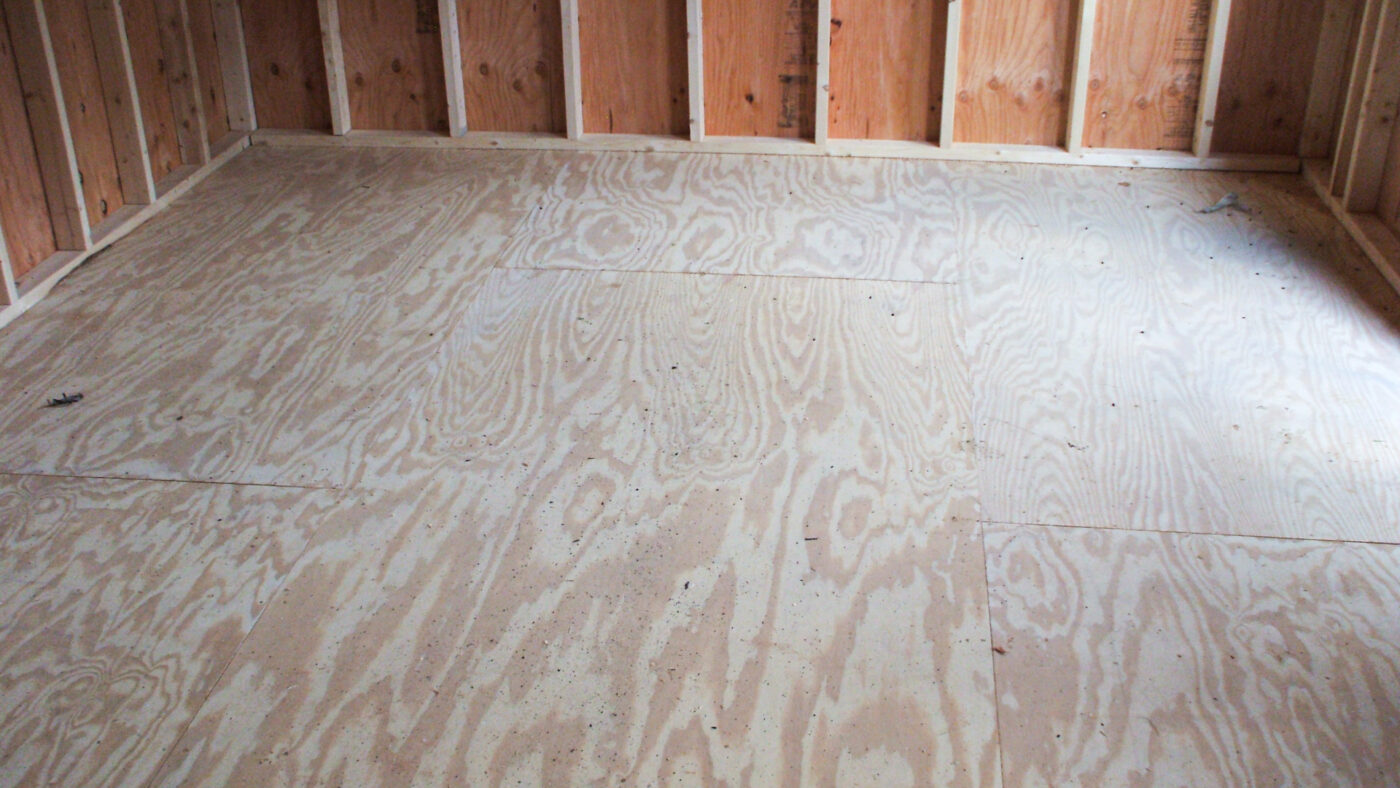
A sturdy floor in your shed is vital for the longevity of the shed. The last thing we want to happen several years down the road is for you to have to replace the floor due to mold, warping, or simply because it doesn’t fit your needs. In this article, we will answer all your questions about shed flooring so you can make informed decisions to choose the best flooring for your needs.
A shed will need a floor or base, depending on the type of shed and how “floor” is defined. There is the base or foundation type of floor and the floor on which you will store your items. The floor and base can be the same, or they can be two separate things.
If a shed is over 300-500lbs, it should have a foundation. The larger the shed, the more critical it is to have a solid and level foundation. Setting it on bare ground without a solid foundation will not be stable or durable and can cause the shed to rot.
If it is a pre-built shed, it is best to check with the manufacturer to see what they recommend for their base. If the shed is built from scratch, then the shed will need a solid foundation such as gravel or concrete.
A sturdy level floor in a shed is vital, especially if you are storing heavy items in the shed. Items stored in a shed with uneven flooring can move around and could get damaged.
The best flooring material for a shed will depend on what you are going to use the shed for. If your shed stores heavy items like a lawnmower, you will need a floor that can withstand that weight. If you plan to use your shed as a workshop, you will want to consider flooring that is kind on your feet.
Here are some ideas for shed flooring:
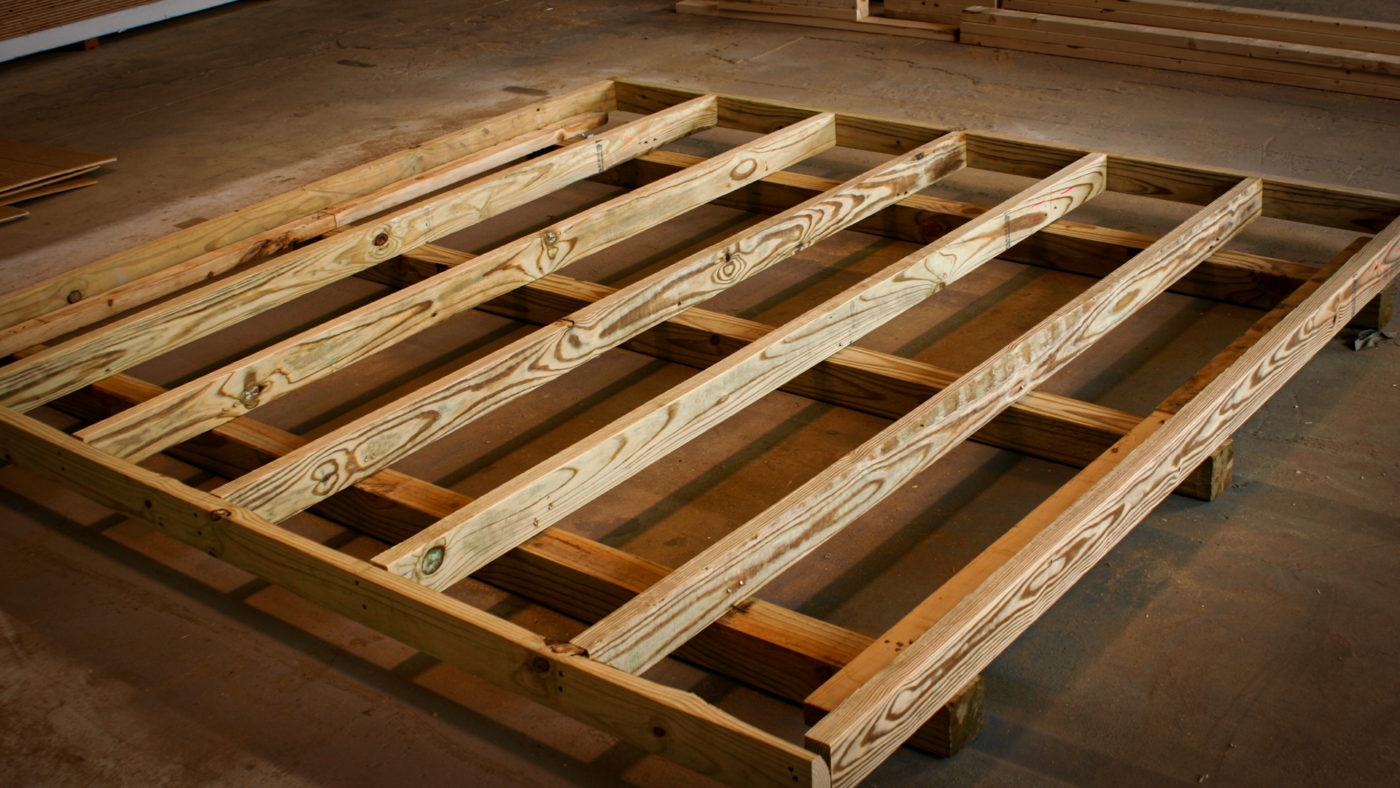
As mentioned before, concrete flooring will be your most durable option and an excellent choice for storing heavy items. With concrete, there is no need to worry about bugs, rot, or water damage, which makes it a very low-maintenance flooring.
There are some disadvantages to concrete flooring. It is the most expensive option for shed flooring. It’s cold, hard on your feet, and can stain easily if not sealed. Concrete is also tough to remove if you decide to relocate your shed.
A shed that has a pre-built wooden shed will save you from having to decide what flooring you will want in your shed. However, you will still need to decide what base or foundation you need under your shed. A shed with a wooden floor placed directly on the ground will cause many problems. You will run into issues with the shed getting damp and rotting, and if it is not set on level ground, it will put a lot of stress on the frame, undermining its structural integrity.
A gravel foundation is an excellent foundation for a shed with a built-in floor. Gravel is cheaper than concrete and relatively easy to install. Gravel will properly allow water to drain, preventing your wooden shed from rotting.
Yes, most wooden sheds should have a floor or foundation. As mentioned above, a wooden shed without a proper foundation will run into problems with moisture which can cause the shed to rot.
Sturdy flooring is vital if you plan to store heavy items in the shed. It is also essential to have a floor that is level and sturdy. An uneven floor can cause objects to roll around, possibly damaging itself and the shed in the process.
If you are planning on using the shed for a workshop or something similar, it is important to have durable flooring that you can stand on for extended periods.
The average storage shed floor can hold 20lbs per square foot. So, for example— a 10×12 shed could hold up to 2,400lbs.
There are several ways to add a floor to a shed, but we have found a helpful YouTube video that provides a simple and easy way to add one.
How to build a storage shed – Floor | Part 1
The cheapest shed flooring material is OSB. If you want an inexpensive yet sturdy floor, OSB might be a good fit for you. The disadvantage of OSB is that it can break down and rot if it is exposed to moisture. It also does not look nice. You can partly solve this problem by adding a floor covering such as horse stall mats or vinyl rolls.
Note: It will be easiest to position the shed base before beginning construction.
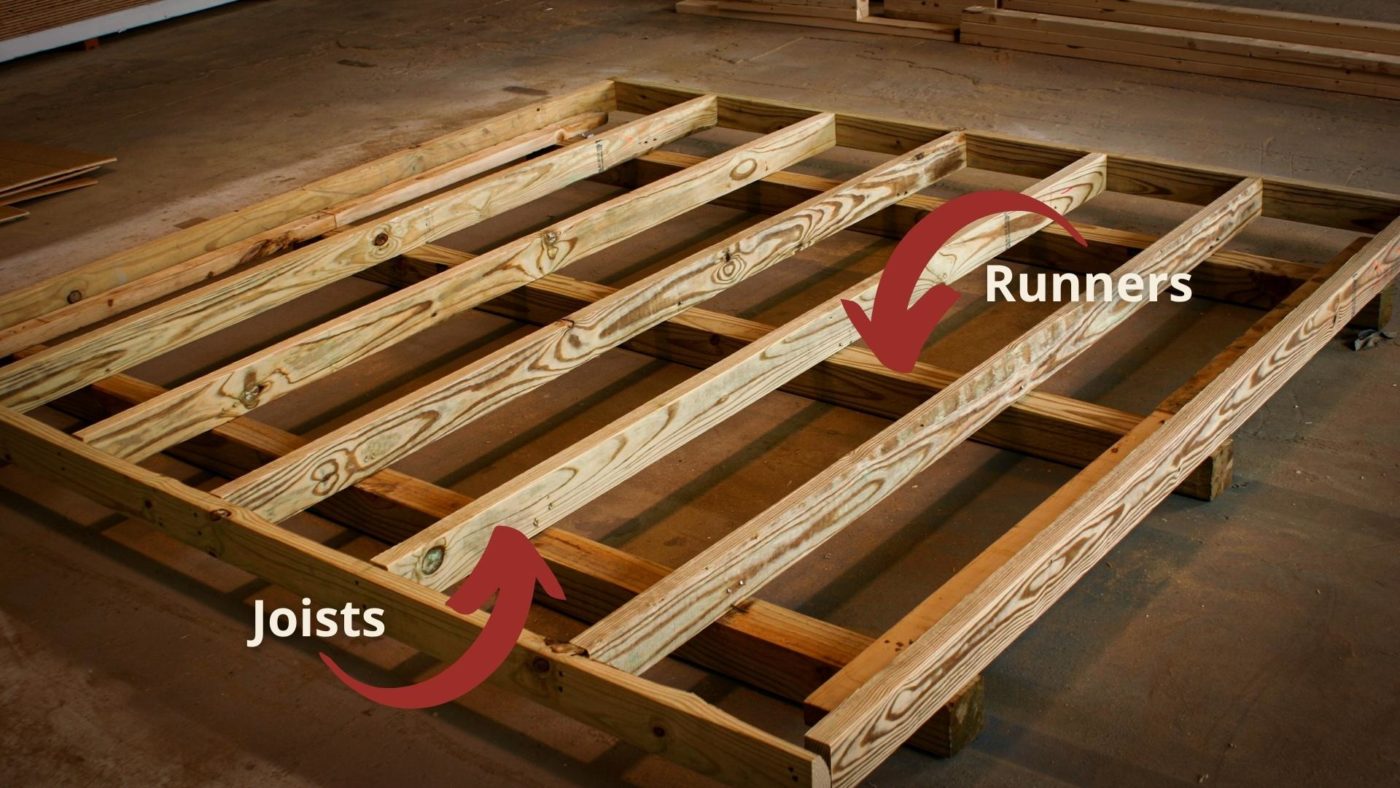
Yes, a wooden shed floor will need to be pressure-treated. If you want your shed to stand up to the elements without quickly rotting or molding, then the floor must be pressure-treated.
Choosing the correct joists for your shed is important in designing and building your shed floor. You will want joists that will safely hold your items, and the heavier the items you wish to store, the more critical it is to choose the correct floor joists.
You should only use 2×4 if you have a small shed that will only store lightweight tools—such as shovels and rakes. For anything heavier, you should use 2×6 or 2×8.
2×6 is the standard size used in storage sheds as it can support 53lbs per linear foot of uniform load. 2×8 is another size commonly used in sheds to store heavier items. As mentioned before, 2x4s should only be used for lightweight storage.
Joist hangers are generally not needed for a shed floor. You will need them if the joists have nothing to rest on, but if you put a runner underneath, the joist should be stable. For added stability, you can add grooves to the runners for the joists to rest in.
Concrete, plywood, and OSB boards are common options for shed flooring, and the thickness needed for each depends on what you will be using them for.
Concrete– A 4” concrete slab should work well for a shed floor. If you plan on storing something heavier in your shed, you can pour a 6-8” slab, but it is not common to need that. Some also choose to add a 2-4” thickened edge to their shed floor to protect against cracks and breakage.
Plywood– The standard thickness for plywood is ⅝-inch to ¾-inch.
OSB– The standard thickness for OSB is ⅝ inch.
If you want the cheapest shed flooring option, OSB is your answer. Another option (like pressure-treated plywood) will be a better fit if you want longevity.
OSB should last a few years and has a nearly identical load ranking as traditional plywood. However, because it has a lot of end grain exposed, it easily absorbs water making the floor lose its structural integrity. You can buy waterproof OSB, but you need to treat the edges of the boards.
Another disadvantage of OSB is its appearance. If you plan on using your shed simply for storage or as a workshop, appearance might not be of the utmost importance to you, but if you want to turn your shed into a place to hang out and relax, then OSB flooring will be an eyesore.
Pressure-treated plywood is commonly seen as superior flooring when compared to OSB. Both OSB and Pressure-treated plywood are generally sturdy and withstand quite a bit of wear and tear. However, OSB has more difficulty with moisture.
Pressure-treated plywood is one of the best options for shed flooring. Pressure-treated plywood is resistant to wood rot, insects, and water. It is also easy to paint and sweep.
A downside of pressure-treated plywood is that even though it is pressure-treated, it can still suffer corrosion and weather over time.
You can use ½ plywood for lightweight storage–such as rakes and shovels. ⅝-¾-inch- plywood is better, though, for the standard shed.
Painting your shed’s floor can be a great idea to protect and seal the wood. It also reduces splinters, is easy to clean, and it enhances the shed’s look.
It will be easiest to paint your shed floor when it is new and barely used. Also, remember that you should wait three months to paint pressure-treated materials so they can properly dry.
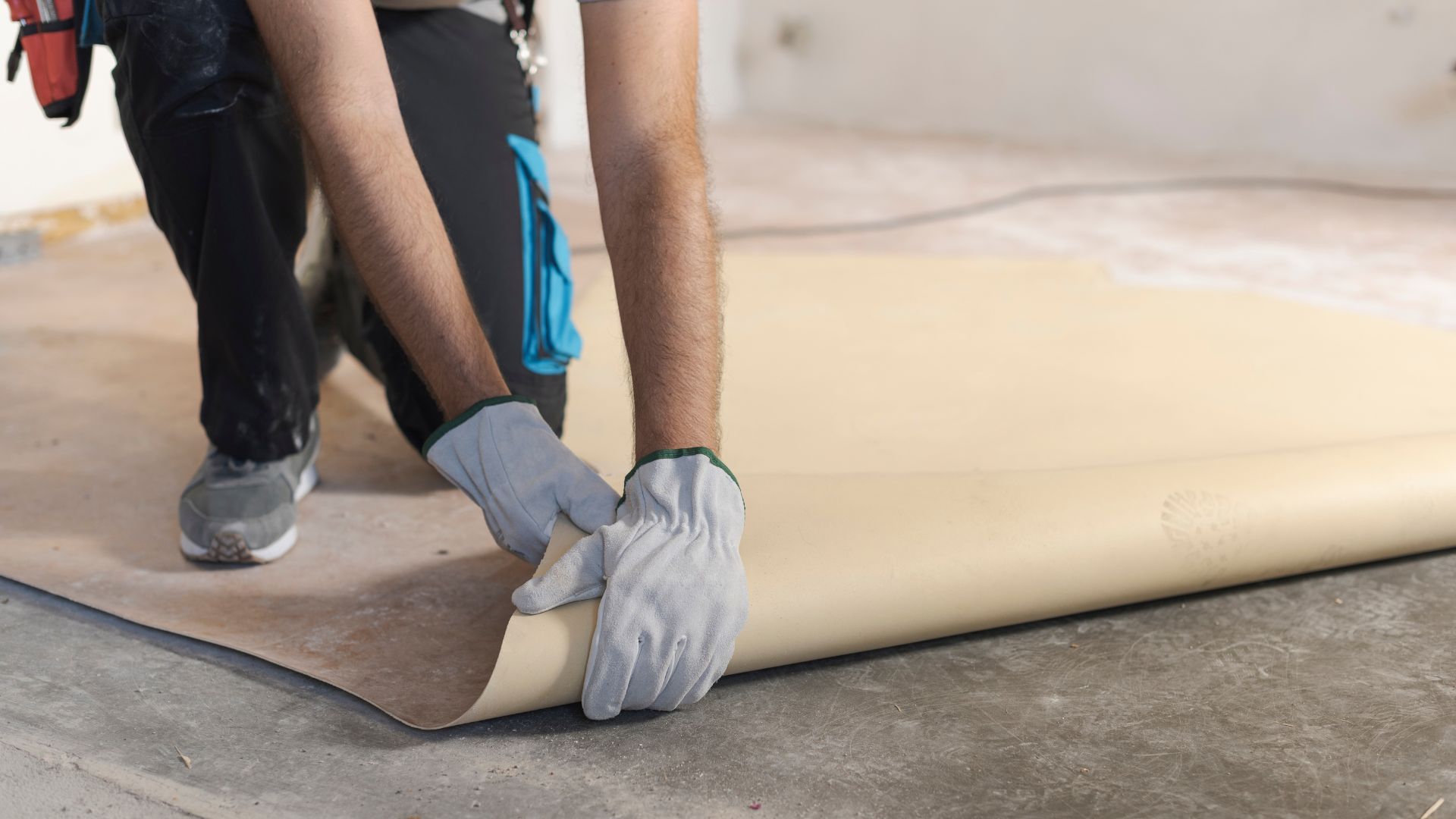
Can you put lino/linoleum in a shed?
Yes, you can put lino/linoleum flooring in a shed. It is a budget-friendly and durable shed flooring option. However, there is a possibility lino could trap moisture under it, causing rotting and molding.
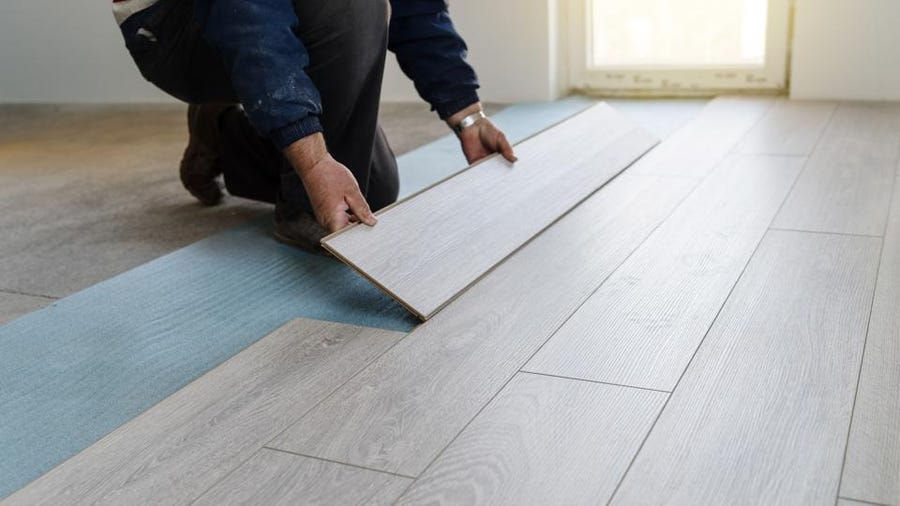
Can I use laminate flooring in a shed?
Yes, you can use laminate flooring in a shed if you first install underfloor insulation. Laminate is a reasonably affordable and attractive flooring option. There are many styles for you to choose from to match your preferences. The disadvantage of laminate shed flooring, though, is its problem with moisture. It can be slippery, hard to repair, and can warp.
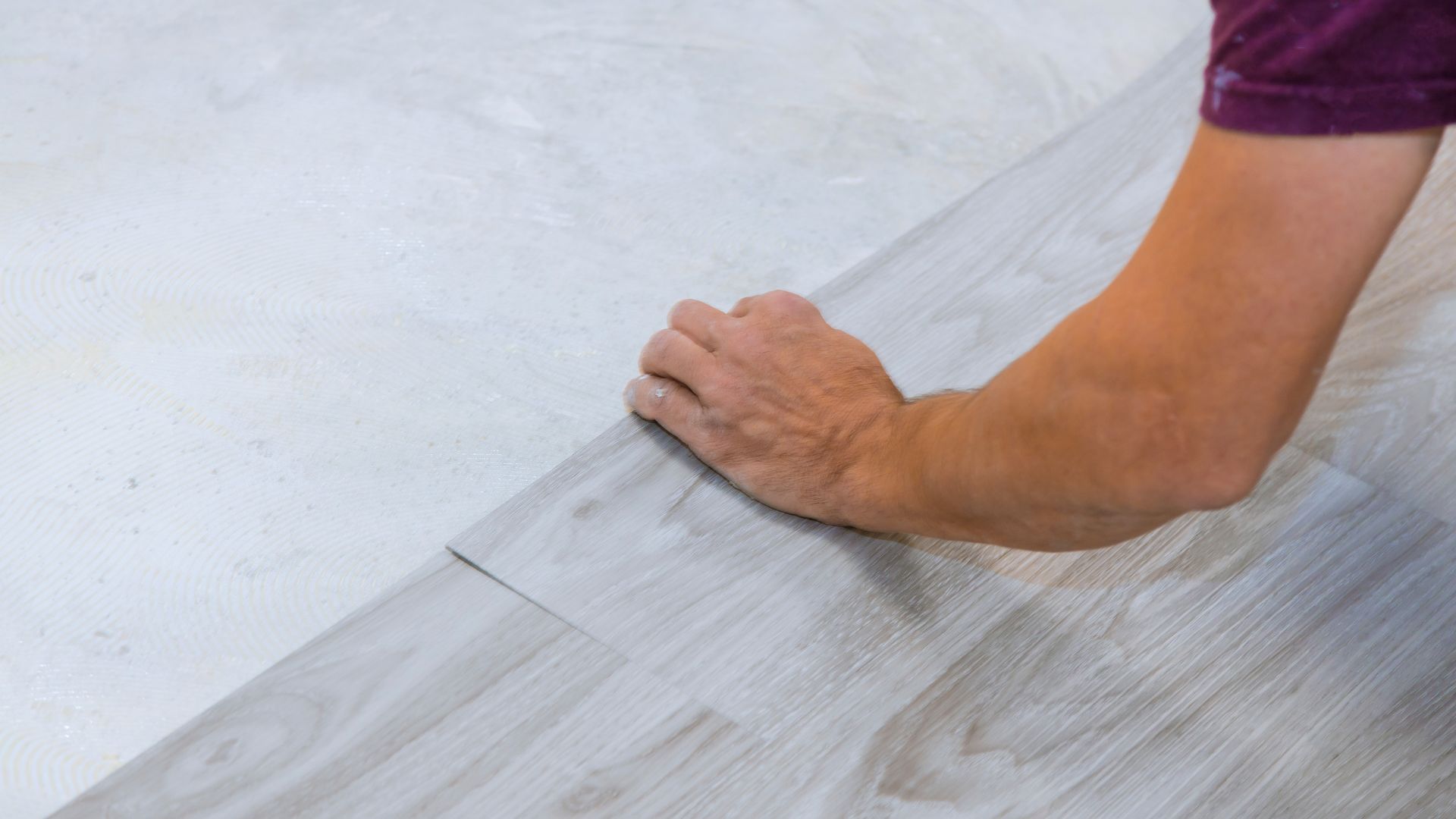
Is vinyl flooring good for a shed?
Yes, you can use vinyl plank flooring for shed flooring. It is durable and easy to maintain. This option tends to be a bit pricy, but if you intend to use your shed as a living space, it is a great choice. You should also check out “How to Keep a Shed Cool” if you plan on living in your shed.
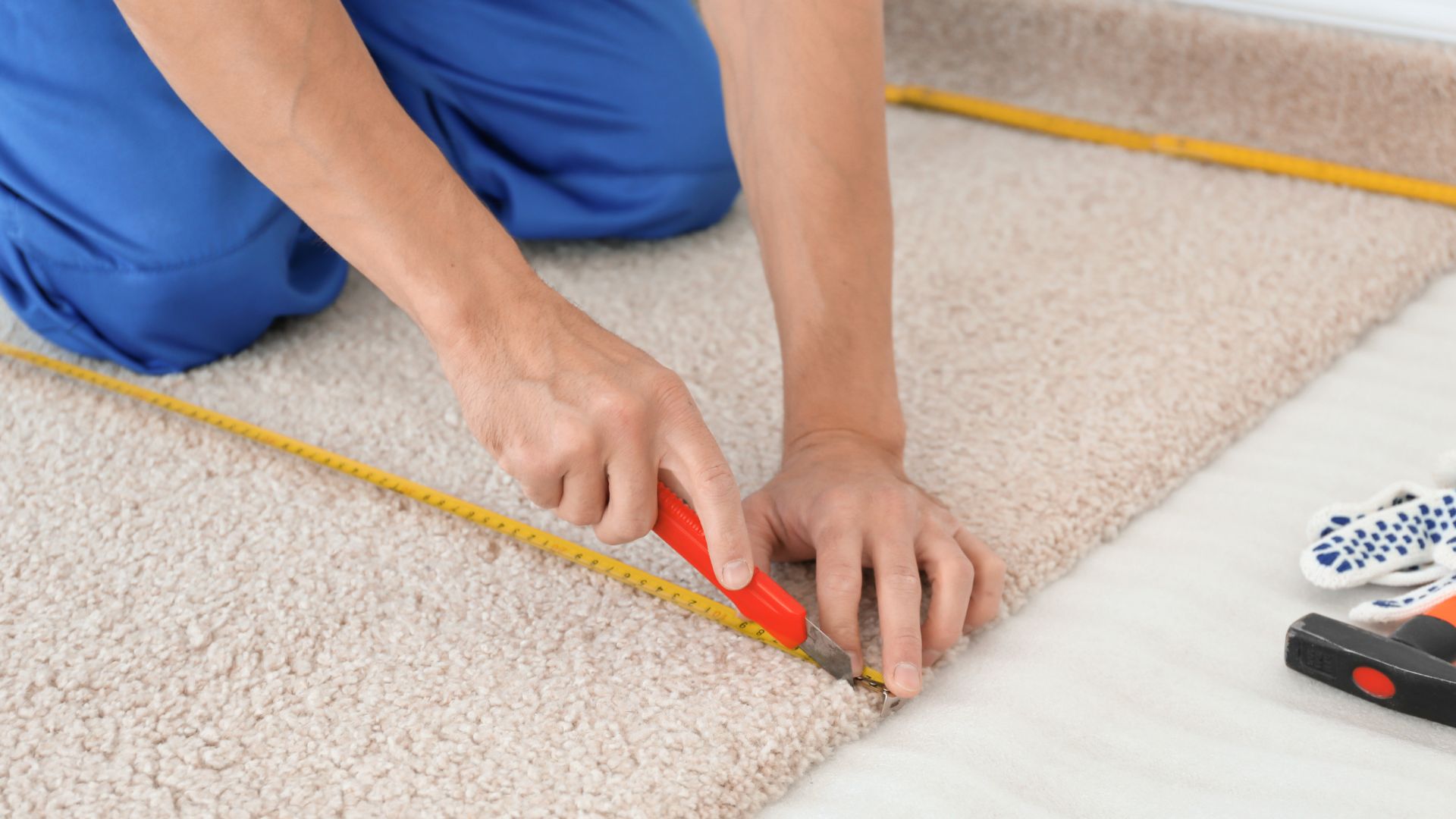
Should you carpet a shed?
Carpeting your shed floor can be a great idea to use up any extra carpet you have lying around. Carpet can make your shed feel warmer and creates a soft surface. However, carpet is not very durable. It absorbs water, it can stain easily, and mold can grow on dirty carpets. Also, if you’re worried about comfort in your shed, you should check out our guide for insulated sheds here.
What should I put over my shed floor?
Some common floor coverings are:
Yes, a shed should have airflow underneath it. If you are building a shed from scratch, you should build it up off the ground so there is airflow. Also, enclosing the bottom of the shed will lead to moisture build-up, causing issues with mold and rot.
Waterproofing your shed floor is essential. If the floor isn’t waterproof, the chances of dealing with rot and mold will significantly increase. Use pressure-treated plywood at least ¾” thick to waterproof your shed’s floor. Seal any cut ends with a sealer and if your shed has a concrete floor, add sealant between the concrete and the wood frame of the shed.
When building your shed, use pressure-treated material for your floor. The surfaces of pressure-treated wood are sealed and have a stronger structure than untreated material. Make sure that your shed is elevated off the ground. This will minimize the damage water to your shed. Along with this, a good foundation–such as concrete piers, a deck bock foundation, or a gravel pad– can significantly decrease the chance of rot and mold.
A damp shed floor can lead to premature rotting and mold and warp the wood. You probably would like to avoid all these things, so here are some ideas to damp-proof your shed:
So, now you understand the importance of shed flooring for the longevity of your shed. Your flooring is the foundation of the interior of your shed, where all of your items will be placed. It would be a shame for you to have to change the flooring due to mold, deterioration, or even because it doesn’t fill your needs. Not to mention the headache it would be to replace it. Here at Sheds Unlimited, you won’t have to worry about flooring because our sheds come standard with flooring, customizable to your liking!
Create the building of your dreams by customizing a design in 3D. You can also call us at 717-442-3281. We're here to assist you!